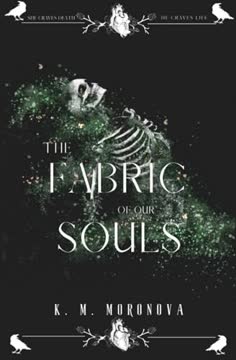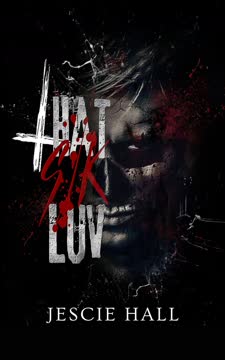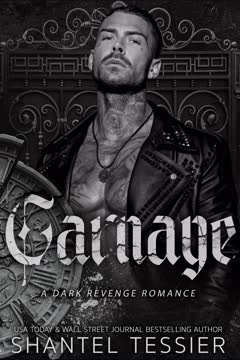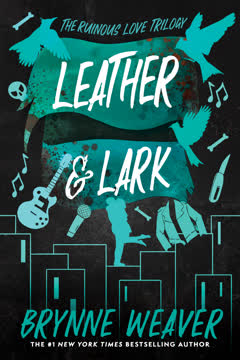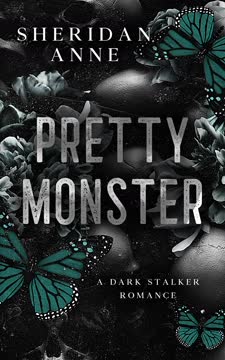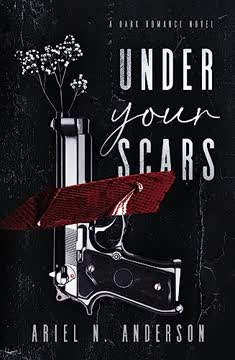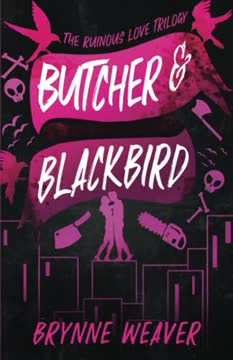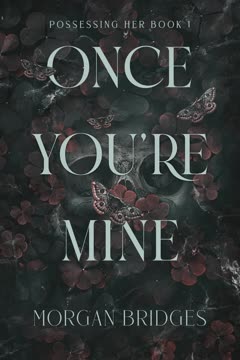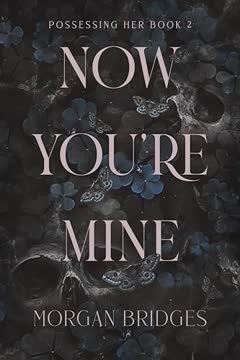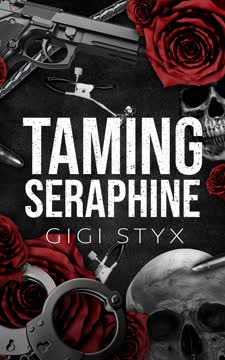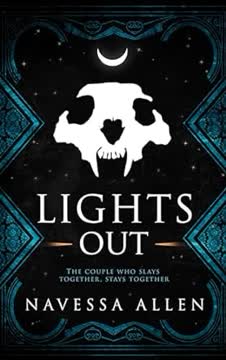Plot Summary
The Curtain Closes
Wynn Coldfox, a 26-year-old with a literal and figurative bad heart, opens the story in the aftermath of a suicide attempt. Her brother James, the only family she has left, is desperate to save her. Their relationship is strained by misunderstanding and grief, but James's love is unwavering. He arranges for Wynn to be admitted to Harlow Sanctum, an expensive, unorthodox rehabilitation center in Montana. Wynn's narration is raw, darkly humorous, and unflinchingly honest about her depression, trauma, and the emptiness that consumes her. The opening sets the tone: this is a story about broken people, the pain of being misunderstood, and the desperate hope for something—anything—to make life bearable.
Unorthodox Sanctuary
Harlow Sanctum is not a typical institution. It's more like a gothic hotel, with communal living, co-ed rooms, and a philosophy that embraces the messiness of mental illness. Wynn is paired with a mysterious, darkly magnetic roommate, Liam Waters, who is as broken as she is. The staff, especially counselor Jericho, are unconventional but caring. The patients are a motley crew, each with their own scars and secrets. The environment is both liberating and unsettling, forcing Wynn to confront her pain in new ways. The rules are loose, the therapy is group-based, and the boundaries between healing and harm are blurred.
Roommates and Ruins
Wynn's relationship with Liam is immediately fraught with tension, attraction, and danger. Liam is a masochist, drawn to pain as a way to feel alive, and he recognizes a kindred darkness in Wynn. Their interactions are charged with both sexual and emotional volatility. They make a pact: to stop each other from self-destruction, to be each other's "cure." But their connection is as toxic as it is healing, and the boundaries between love, hate, and need blur. The other patients, especially Lanston Nevers, become part of Wynn's new, fragile support system, but the threat of relapse and the ghosts of the past are never far away.
The Pact of Pain
Wynn and Liam's relationship deepens through shared pain and vulnerability. They confess their darkest thoughts, care for each other's wounds, and make a pact to hold each other back from the brink. Their intimacy is raw, sometimes violent, and always laced with the knowledge that they are each other's only lifeline. The onyx rings and moonflowers become symbols of their bond—a hope that grief can be banished, even if only for a night. The other patients, especially Lanston, form a trio with them, each finding solace in the others' brokenness.
Rain Rituals and Revelations
Wynn begins to experience moments of lightness—dancing in the rain with Yelina, laughing with Lanston, and even smiling for real. The group therapy sessions, though chaotic, start to help her open up. The patients share their pain with dark humor and honesty, creating a sense of community. But beneath the surface, old traumas and new dangers simmer. Rumors of missing patients, haunted basements, and a mysterious figure named Crosby begin to surface, hinting at a darkness that predates Wynn's arrival.
Group Therapy Games
The group's dynamic is both healing and hazardous. Therapy sessions are irreverent, often derailed by jokes and confessions of suicidal ideation. Wynn, Liam, and Lanston bond over dark humor, shared trauma, and a mutual desire to live, even if just for each other. The trio becomes inseparable, their connection deepening through shared secrets, late-night games, and the slow, painful process of learning to trust. But the past is never far behind, and the specter of relapse looms over them all.
Hate, Hurt, and Hunger
Wynn and Liam's relationship explodes into physical and emotional intensity. Their sex is violent, cathartic, and deeply entwined with their pain. They hurt each other, heal each other, and become addicted to the cycle. Lanston, meanwhile, becomes Wynn's confidant and emotional anchor. The three of them form a makeshift family, each filling a void in the others' lives. But the darkness inside them is never fully banished, and the threat of self-destruction is always present.
The Three of Us
The trio—Wynn, Liam, and Lanston—become each other's reason to keep going. They share everything: therapy, secrets, laughter, and pain. Their bond is tested by jealousy, trauma, and the ever-present risk of relapse. The onyx rings and moonflowers symbolize their pact to survive together. But the past, especially Liam's, casts a long shadow, and the arrival of new threats forces them to confront the limits of their love and loyalty.
Haunted by the Past
The mystery of the missing patients deepens. Wynn, Liam, and Lanston investigate rumors of disappearances, haunted basements, and a sinister figure named Crosby. Liam's past is revealed in fragments: a tragic car accident, a broken family, and a brother who is both victim and monster. The trio discovers evidence that links Crosby to the unsolved disappearances, and the line between past and present begins to blur. The threat is no longer just internal—it is stalking them from the shadows.
The Basement's Secret
The trio's investigation leads them to the basement, where they find evidence of someone living there recently—a fort, a photo, and the name Crosby. The discovery triggers trauma in Liam, who is forced to confront the reality that his past is not as buried as he hoped. The group realizes that the danger is real and immediate, and that the ghosts of Harlow Sanctum are not just metaphors. The sense of safety they have built is shattered, and the threat of violence becomes tangible.
The Ghost Named Crosby
Crosby is revealed to be Liam's brother, Perry, whose dissociative identity disorder has turned him into both victim and perpetrator. Crosby is responsible for the missing patients, the violence at Harlow, and the ongoing terror that haunts Liam. The revelation is devastating, forcing the trio to confront the reality that the greatest threat to their survival is not just their own pain, but the people they love. The lines between love, hate, and harm are blurred beyond recognition.
Moonflowers and Onyx Rings
The moonflower field and the onyx rings become central symbols of the trio's bond and their struggle to survive. The rings, once belonging to the missing patients, are passed between them as talismans against grief. The moonflowers, planted by a survivor, become a place of solace and memory. The trio's pact is tested as Crosby's threat becomes more immediate, and the boundaries between healing and harm are pushed to their limits.
The Cure and the Curse
The trio's bond is both their salvation and their undoing. As Crosby's violence escalates, Wynn, Liam, and Lanston are forced to make impossible choices. Their love is fierce, flawed, and deeply human—a lifeline in the darkness. But the cost of survival is high, and not all of them will make it out unscathed. The story becomes a meditation on the thin fabric of the soul, the power of found family, and the possibility of healing even in the face of unimaginable pain.
The Cornfield Incident
During a town festival, the trio and their friends are trapped in a haunted corn maze by Crosby, who attacks them with a machete. The incident is chaotic, violent, and traumatic, leaving Lanston and Liam seriously injured and Yelina dead. The aftermath is devastating: the sense of safety at Harlow is destroyed, and the trio is forced to confront the reality that they are being hunted. The incident marks a turning point, shattering their fragile peace and setting the stage for the final confrontation.
Fire and Ashes
Crosby sets fire to Harlow Sanctum, killing nearly everyone inside. Wynn and Lanston escape only because they were hiding in town, but the guilt of survival is overwhelming. The fire is both literal and symbolic—the destruction of their sanctuary, the loss of their found family, and the end of innocence. The survivors are left to pick up the pieces, haunted by grief, guilt, and the knowledge that Crosby is still out there.
The Final Confrontation
The climax unfolds in a golden field outside town, where Wynn, Liam, and Lanston face Crosby in a brutal, bloody showdown. All three are shot; Lanston is paralyzed, Wynn is mortally wounded, and Liam barely survives. In a final act of love and sacrifice, Lanston gives his heart—literally and figuratively—to Wynn, saving her life. Crosby is finally killed, but the cost is almost unbearable. The trio's bond is both their salvation and their undoing, and the story ends with the survivors forever changed.
Hearts Given, Hearts Lost
Wynn wakes in the hospital, alive only because Lanston gave his heart for her. The loss is devastating, but the love and sacrifice of her found family give her the strength to go on. Liam survives, but both are haunted by the trauma and loss. The story becomes a meditation on grief, healing, and the possibility of redemption. The memory of Lanston, the moonflowers, and the onyx rings become guiding lights as they try to build a new life.
Never Haven: A New Beginning
A year later, Wynn and Liam have relocated to Boston, where they help design a new rehabilitation center, Never Haven, on the site of the old Harlow Sanctum. The moonflower field becomes a memorial to the lost, and the new institute is a place of hope and healing for others like them. Wynn, now pregnant, and Liam find peace in each other and in the memory of Lanston, whose sacrifice made their future possible. The story ends with a sense of hard-won hope: the fabric of their souls is still thin, but it is stitched together with love, loss, and the promise of new beginnings.
Characters
Wynn Coldfox
Wynn is the protagonist, a young woman whose life is defined by trauma, depression, and a literal heart condition. Her voice is raw, darkly funny, and unflinchingly self-aware. She is both victim and survivor, struggling to find meaning in a world that has repeatedly failed her. Her relationships—with her brother James, with Liam, and with Lanston—are the lifelines that keep her from succumbing to despair. Wynn's journey is one of learning to accept love, to forgive herself, and to find hope even in the darkest places. Her development is marked by moments of vulnerability, rage, and, ultimately, resilience.
Liam Waters
Liam is Wynn's roommate and eventual lover, a man whose pain runs as deep as his capacity for love. Scarred by a tragic accident that killed his brother and fractured his family, Liam turns to self-harm as a way to feel alive. His relationship with Wynn is both healing and destructive, marked by violence, tenderness, and a desperate need for connection. Liam's greatest struggle is with his brother Crosby, whose dissociative identity disorder has turned him into both victim and monster. Liam's arc is one of learning to forgive himself, to accept love, and to fight for a future he never thought possible.
Lanston Nevers
Lanston is the third member of the trio, a man whose warmth and humor mask deep wounds. He is Wynn's confidant, emotional anchor, and, ultimately, her savior. Lanston's own struggles with depression and suicidal ideation make him uniquely empathetic, and his bond with Wynn and Liam is the heart of the story. His sacrifice—giving his heart to Wynn, both literally and figuratively—is the ultimate act of love and redemption. Lanston's presence lingers as a guiding spirit, a reminder that even the most broken souls can save each other.
Crosby/Perry Waters
Crosby is Liam's younger brother, whose dissociative identity disorder has turned him into both a victim of trauma and a perpetrator of violence. As Crosby, he is responsible for the missing patients, the violence at Harlow, and the fire that destroys the sanctuary. As Perry, he is a lost, frightened boy, forever stuck in the aftermath of tragedy. Crosby is both the embodiment of the past that haunts the characters and a symbol of the ways in which trauma can warp and destroy. His death is both a relief and a tragedy, marking the end of one cycle of pain and the beginning of another.
James Coldfox
James is Wynn's older brother, the only family she has left. His love is unwavering, but he is often at a loss for how to help her. His decision to send Wynn to Harlow is an act of desperation and hope. James's presence is a reminder of the importance of family, even when it is fractured and flawed. He represents the outside world, the possibility of redemption, and the enduring power of love.
Yelina
Yelina is one of the patients at Harlow, a woman whose bipolar disorder and unrequited love for Liam make her both a source of chaos and a victim of the story's violence. Her death in the fire is a stark reminder of the fragility of life and the randomness of survival. Yelina's presence is both a warning and a comfort—a reminder that everyone at Harlow is fighting their own battles.
Jericho Melvich
Jericho is the program counselor at Harlow, a man whose unconventional methods and genuine care make him both effective and exasperating. He is a stabilizing force in the chaos, but his inability to protect his patients from the ultimate tragedy is a source of guilt and grief. Jericho represents the limits of therapy, the importance of community, and the reality that healing is never simple or guaranteed.
Dr. Prestin
Dr. Prestin is the psychiatrist at Harlow, a man more comfortable with diagnoses and medications than with the messy realities of his patients' lives. His presence is a reminder of the limitations of the medical model, the dangers of detachment, and the need for compassion in the face of suffering.
Poppie
Poppie is another patient at Harlow, known for her dark humor and blunt honesty. She is a minor but memorable character, representing the ways in which humor and irreverence can be both coping mechanisms and shields against pain.
Monica
Monica is the only known survivor of the original group of missing patients. Her legacy—the moonflower field and the onyx rings—becomes a symbol of hope, survival, and the possibility of healing. Monica's presence is felt more than seen, a ghost who haunts the story and offers a glimmer of redemption.
Plot Devices
Nonlinear, Multi-Voice Narrative
The story unfolds through shifting points of view—primarily Wynn's, but also Liam's and Lanston's—mirroring the characters' fractured mental states. Flashbacks, dreams, and hallucinations blur the line between past and present, reality and memory. This structure creates a sense of disorientation and intimacy, drawing the reader into the characters' inner worlds and making their pain and hope palpable.
Symbolism: Onyx Rings and Moonflowers
The onyx rings, passed between characters, symbolize protection, grief, and the hope for healing. The moonflower field, planted by a survivor, becomes a place of memory, solace, and rebirth. These symbols anchor the story's themes, providing continuity and meaning amid chaos.
The Haunted Setting
Harlow Sanctum is both a place of healing and a site of horror. Its gothic architecture, communal living, and haunted history create an atmosphere of both safety and danger. The setting becomes a character in its own right, reflecting the characters' internal struggles and the thin line between sanctuary and prison.
The Monster Within and Without
Crosby/Perry is both a literal and metaphorical monster—the embodiment of trauma, guilt, and the ways in which pain can warp and destroy. The story blurs the line between internal and external threats, making the fight for survival both a battle against the self and against the ghosts of the past.
Found Family and Sacrifice
The trio's bond is the heart of the story, offering both hope and heartbreak. Their willingness to sacrifice for each other—culminating in Lanston's literal gift of his heart—underscores the story's central message: that love, even when flawed and painful, is the only thing that can mend the fabric of the soul.
Foreshadowing and Recurrence
The story is laced with foreshadowing—rumors of missing patients, haunted basements, and the ever-present threat of relapse. Recurring motifs (the onyx rings, moonflowers, the phrase "remedium meum") create a sense of inevitability and continuity, tying the characters' journeys together and hinting at the possibility of healing.
Analysis
The Fabric of Our Souls is a raw, emotionally charged exploration of what it means to live with mental illness, to love and be loved in the midst of pain, and to find hope in the ruins of the past. The story refuses easy answers or tidy resolutions; its characters are messy, morally gray, and deeply human. Through its nonlinear structure, potent symbolism, and unforgettable characters, the novel confronts the realities of depression, self-harm, and trauma without flinching. Yet, it is ultimately a story of hope: that even the thinnest, most tattered fabric of the soul can be mended through love, sacrifice, and the courage to keep going. The lesson is clear—healing is not about erasing pain, but about finding meaning, connection, and beauty in the midst of it. The book's legacy is one of radical empathy, urging readers to see the brokenness in themselves and others not as a curse, but as the beginning of something beautiful.
Last updated:
FAQ
0. Synopsis & Basic Details
What is The Fabric of Our Souls about?
- A Journey of Healing: The Fabric of Our Souls follows Wynn Coldfox, a 26-year-old woman grappling with severe depression and a literal heart condition, as she enters Harlow Sanctum, an unorthodox rehabilitation center. The story delves into her raw, darkly humorous struggle to find a reason to live after a suicide attempt.
- Unconventional Connections: At Harlow, Wynn is thrust into a world of morally grey characters, forming a complex, intense bond with her enigmatic roommate, Liam Waters, a masochist seeking to feel alive, and finding a kindred spirit in Lanston Nevers, who battles his own suicidal ideations. Their intertwined journeys explore the messy, often painful, path to healing.
- Dark Romance & Thriller Elements: Beyond the emotional depth, the narrative weaves in elements of a dark romance, exploring the volatile and passionate relationship between Wynn and Liam, alongside a psychological thriller as the trio uncovers sinister secrets and a dangerous past haunting Harlow Sanctum.
Why should I read The Fabric of Our Souls?
- Unflinching Emotional Honesty: The book offers a brutally honest and empathetic portrayal of mental illness, depression, and trauma, providing a rare glimpse into the internal struggles of its characters without romanticizing the suffering itself, but rather the journey towards connection.
- Complex, Morally Grey Characters: Readers seeking nuanced character development will appreciate Wynn, Liam, and Lanston, whose flaws and dark coping mechanisms make them deeply human and relatable, challenging conventional notions of heroism and villainy.
- Intriguing Blend of Genres: If you enjoy dark romance intertwined with psychological suspense and a touch of mystery, this novel delivers a unique reading experience that keeps you engaged with its emotional intensity and unexpected plot twists.
What is the background of The Fabric of Our Souls?
- Fictional Unorthodox Rehab Setting: The story is set in the fictional Harlow Sanctum, a rehabilitation institute in rural Montana, designed as an "unorthodox" facility that blurs the lines between therapy and unconventional living, including co-ed rooms and a relaxed approach to patient interactions. This unique setting is central to the plot and character development.
- Exploration of Mental Illness: Author K.M. Moronova states in the Author's Note that the book is a "deep dive into emotional and mental illness from my perspective," emphasizing that it romanticizes rehabilitation centers and mentally unwell people falling in love, offering a personal lens on depression and irrational thoughts.
- Content Warning for Dark Themes: The book carries explicit content warnings for physical violence, explicit sex, gore, suicide, self-harm, and childhood abuse trauma, indicating its commitment to exploring dark and disturbing themes for an adult audience.
What are the most memorable quotes in The Fabric of Our Souls?
- "Because it's so much better to watch things squirm in pain than simply die, Wynn. You'll let me know, won't you?": This chilling yet deeply insightful line from Liam to Wynn in Chapter 2 encapsulates his masochistic philosophy and his initial, dark fascination with her desire to die, setting the stage for their complex, pain-infused connection. It highlights his need to feel something over nothing.
- "The fabric of our souls is thin and worn. We must be gentle and love tirelessly.": Spoken by Lanston in Chapter 22, this quote becomes a central theme, beautifully articulating the fragility of the characters' mental states and the profound, gentle care required to heal and sustain their bonds. It underscores the novel's core message about the delicate nature of human connection and resilience.
- "Remedium meum.": This recurring Latin phrase, meaning "My cure," is whispered by Liam to Wynn throughout the novel, particularly in moments of intimacy and vulnerability (e.g., Chapter 4, 12, 27, Epilogue). It symbolizes their mutual reliance for healing and survival, signifying that they are each other's antidote to despair and the ultimate source of hope.
What writing style, narrative choices, and literary techniques does K.M. Moronova use?
- Nonlinear, Multi-Voice Narrative: Moronova primarily employs a first-person point of view, predominantly from Wynn's perspective, but also shifting to Liam's and Lanston's at pivotal moments. This narrative choice immerses the reader deeply into the characters' subjective experiences, allowing for raw, unfiltered access to their thoughts, emotions, and internal struggles, enhancing the psychological depth.
- Darkly Humorous and Unflinching Tone: The author maintains a consistent tone that is both darkly humorous and unflinchingly honest, particularly in Wynn's internal monologue. This allows for the exploration of heavy themes like depression and self-harm with a unique blend of cynicism and vulnerability, making the difficult subject matter more accessible while retaining its gravity.
- Symbolism and Foreshadowing and Recurrence: Moronova heavily utilizes symbolism (e.g., onyx rings, moonflowers, the gothic architecture of Harlow) and subtle foreshadowing (e.g., early mentions of missing patients, Liam's Roman numeral tattoo) to enrich the narrative. These literary devices create layers of meaning, hint at future events, and deepen the thematic resonance of the story, inviting readers to look beyond the surface plot.
1. Hidden Details & Subtle Connections
What are some minor details that add significant meaning?
- Mrs. Abett's Dirty Glasses: The receptionist, Mrs. Abett, is described with "abhorrently dirty glasses" and smelling of "mildew and cats" (Chapter 3). This seemingly minor detail subtly hints at the underlying neglect or jadedness within the institution, contrasting with Jericho's initial optimistic portrayal and foreshadowing the deeper, unaddressed issues and dangers lurking beneath Harlow's polished facade.
- Liam's Roman Numeral II Tattoo: Early in the story, Wynn notices a "small tattoo of the Roman numeral II" behind Liam's ear (Chapter 1). This detail subtly foreshadows his deep, pre-existing bond with Lanston, who later reveals a matching tattoo (Chapter 9), symbolizing their shared past and the "two" of them before Wynn joined their "trio" (III), highlighting the theme of found family and shared healing.
- The "Unorthodox" Nature of Harlow: While explicitly stated, the extent of Harlow's "unorthodoxy" is revealed through small, shocking details like patients "fucking in the showers and spa room" (Chapter 6, 14) and the casual acceptance of self-harm (Liam's medical supplies in his nightstand, Chapter 4). This normalizes the extreme behaviors within the institution, blurring moral lines and emphasizing the unique, chaotic environment designed to push boundaries for "therapy."
What are some subtle foreshadowing and callbacks?
- Wynn's "Cold-Hearted Villain" Self-Perception: From the very first line, Wynn states, "I was born with a bad heart. Literally and figuratively. I'm the cold-hearted villain in everyone's story" (Chapter 1). This self-perception subtly foreshadows her later emotional thawing and the literal heart transplant she receives from Lanston, directly addressing both her figurative and literal "bad heart" and her journey from self-loathing to acceptance.
- Liam's Journal of "Odd Things": Wynn discovers Liam's journal filled with "research notes on plants and insects," "drawings of human anatomy and bones," and "articles on missing people" (Chapter 4). This seemingly random collection subtly foreshadows his deep, almost scientific obsession with life, death, and the human body (linking to his masochism), and directly sets up the later revelation of Crosby's connection to the missing patients and the moonflower field.
- The "Mountain Sickness" Reference: Early on, Wynn notes that "Montana is a good place to be sick. The weather sucks, the winters are long, and the mountains beckon to you. Mountain sickness is what I've frequently heard it termed, where the higher altitudes fuck with your brain and make you depressed" (Chapter 3). This seemingly throwaway line subtly foreshadows the pervasive, almost environmental nature of the characters' mental illness, suggesting that the very landscape of their healing is imbued with their suffering.
What are some unexpected character connections?
- Jericho's Hidden Empathy: Despite his often "vexed expression" and "hard job" (Chapter 2, 5), Jericho is shown to be deeply empathetic. He "wipes tears from his eyes" during Wynn's final session (Chapter 36) and is visibly "relieved" when she doesn't tell Liam about Lanston's secret (Chapter 18). This reveals a hidden layer of compassion beneath his professional facade, suggesting he carries the emotional burden of his patients more than he lets on.
- Yelina's Unrequited Love and Spite: Yelina's "unrequited love for Liam" (Chapter 9) is a significant, though often overlooked, connection. Her jealousy and "bitchy" behavior towards Wynn (Chapter 9, 20) are rooted in this unfulfilled desire, culminating in her spiteful act of bringing the entire hall to witness Wynn and Liam in the communal shower (Chapter 21), highlighting the destructive power of unaddressed emotional pain.
- Monica's Enduring Legacy: Monica, one of the "missing patients" from a decade ago, is revealed to be the one who "planted those fucking night flowers out there" (Chapter 41) – the moonflower field. This establishes an unexpected, symbolic connection between the past victims and the present survivors, as her act of hope and beauty (the flowers) becomes a place of solace and memory for Wynn and Liam, linking their healing to her enduring spirit.
Who are the most significant supporting characters?
- James Coldfox: The Unwavering Anchor: Wynn's brother, James, serves as her primary lifeline to the outside world and a symbol of unconditional love. His relentless efforts to get her help, even shouldering the exorbitant cost of Harlow (Chapter 19), highlight the profound impact of family support on mental health recovery, despite his initial inability to fully understand her illness.
- Jericho Melvich: The Flawed Guide: Jericho, the program counselor, is crucial as the embodiment of Harlow's "unorthodox" approach. His blend of professional detachment and genuine, albeit sometimes exasperated, care (Chapter 3, 34) provides a realistic portrayal of mental health professionals navigating complex cases, and his personal emotional responses to his patients' struggles (Chapter 36) underscore the taxing nature of his role.
- Yelina: The Catalyst for Chaos and Empathy: Yelina, initially presented as "one of the crazier patients" (Chapter 9) and a source of conflict due to her unrequited love for Liam, becomes significant through her tragic death. Her character highlights the fragility of life within Harlow and serves as a stark reminder of the real dangers posed by Crosby, deepening the emotional stakes for the surviving trio.
2. Psychological, Emotional, & Relational Analysis
What are some unspoken motivations of the characters?
- Wynn's Desire for Validation through Self-Destruction: Beyond simply wanting to die, Wynn's initial suicide attempt and her self-perception as a "cold-hearted villain" (Chapter 1) are implicitly a desperate cry for validation and attention from those who called her "evil" or "a miserable bitch." Her actions are a twisted attempt to prove their words true, or perhaps, to finally be seen and understood through the extremity of her pain.
- Liam's Pursuit of Pain as a Proxy for Guilt: While Liam explicitly states his masochism is to "feel alive" (Chapter 4), his deeper, unspoken motivation is self-punishment for his brother Neil's death (Chapter 32). His relentless craving for pain is a manifestation of profound guilt, a way to atone for his perceived responsibility, and a desperate attempt to feel something other than the "rotting nothingness" that consumed him after the accident.
- Lanston's Need for Reciprocal Healing: Lanston's unwavering kindness and desire to help Wynn and Liam, despite his own struggles, are driven by an unspoken need for reciprocal healing. Having been saved by Liam (Chapter 9), he implicitly seeks to pay that forward, finding his own purpose and validation in supporting others, particularly Wynn, whose pain mirrors his own (Chapter 37).
What psychological complexities do the characters exhibit?
- Wynn's Emotional Detachment as a Defense Mechanism: Wynn exhibits profound emotional detachment, stating, "What kind of sickness takes your fucking emotions? It's not fair" (Chapter 1). This isn't just depression; it's a complex defense mechanism developed from childhood trauma (her mother's cruelty, Chapter 13), where shutting down emotions became a survival strategy against constant judgment and pain, making her journey to feeling again both terrifying and liberating.
- Liam's Dissociation and Control through Pain: Liam's masochism is a complex coping mechanism for dissociation, allowing him to "feel alive" when otherwise consumed by "nothingness" (Chapter 4). His ability to "school his expression into a blank stare" (Chapter 10) and his shifts between cruel indifference and profound vulnerability (Chapter 19) highlight a fractured psyche that uses physical pain as a grounding tool to regain control when overwhelmed by emotional trauma.
- Lanston's Empathic Burden and Self-Blame: Lanston, despite his warmth, carries a deep psychological complexity rooted in his father's hatred, leading to self-blame ("If I was just a better son," Chapter 37). His profound empathy for Wynn and Liam, while healing, also burdens him, as he internalizes their pain, making his journey about learning to separate his self-worth from external validation and the suffering of others.
What are the major emotional turning points?
- Liam's Piano Performance for Wynn: Liam playing "London Calling" for Wynn (Chapter 13) is a major emotional turning point. His raw, heartfelt performance breaks through Wynn's long-held emotional detachment, causing her to cry for the first time in years. This moment signifies the beginning of her emotional thawing and the realization that she is "still hurting," allowing her to process buried grief.
- Wynn's Attack on Liam and His Confession: The scene where Wynn, overwhelmed by the cost of Harlow, attacks Liam and bites him (Chapter 19) is a brutal turning point. Her subsequent horror at her own actions ("I'm afraid of what I can do when I'm not myself") forces her to confront her inner "monster." Liam's raw confession of his own pain and his plea for her to "stay here in the dim light with me" transforms their dynamic from volatile attraction to a shared, vulnerable love, acknowledging their mutual brokenness.
- Lanston's Revelation of His Father's Hatred: Lanston's late-night confession to Wynn about his father's hatred and his own self-blame (Chapter 37) is a pivotal emotional moment. This shared vulnerability deepens their bond, allowing Wynn to recognize her own similar trauma and validating her feelings. It solidifies their "kindred souls" connection and provides a safe space for both to acknowledge their deep-seated wounds.
How do relationship dynamics evolve?
- Wynn and Liam: From Toxic Pact to Interdependent Love: Their relationship evolves from a "horribly toxic pact for two broken souls" (Chapter 4) characterized by "hate-fucking" and mutual repulsion (Chapter 7, 11) to a deeply interdependent and loving bond. This transformation is marked by shared vulnerability, Liam's confessions of love (Chapter 19), and their mutual reliance as each other's "cure," culminating in a committed partnership and family.
- Wynn and Lanston: From Kindred Spirits to Sacrificial Love: Wynn and Lanston's dynamic shifts from an initial connection as "kindred souls" who share similar struggles with depression (Chapter 9) to a profound, platonic love built on deep empathy and mutual support. Lanston becomes Wynn's emotional anchor, culminating in his ultimate sacrifice (Chapter 45), transforming their bond into a powerful symbol of selfless love and enduring hope.
- Liam and Lanston: From Unlikely Friends to Brothers-in-Arms: Their relationship, initially strained by Liam's "cold" demeanor and Lanston's "sulking" (Chapter 9), deepens into a brotherly bond forged through shared trauma and mutual protection. Liam's saving of Lanston from suicide (Chapter 9) and their shared secret about Crosby (Chapter 31) solidify their loyalty, culminating in Liam's desperate plea for Lanston to "take care of her" (Chapter 43), highlighting their profound trust and love.
4. Interpretation & Debate
Which parts of the story remain ambiguous or open-ended?
- Monica's True Fate and Survival: While Liam states that "Monica got away" and "changed everything about herself so fast I never was able to find her" (Chapter 41), her ultimate fate remains ambiguous. The Epilogue mentions a "middle-aged woman walking down the path toward the memorial site, moonflowers in her hands," whom Liam thinks might be Monica. This leaves her survival open to interpretation, suggesting that some healing journeys happen entirely off-page and remain private.
- The Full Extent of Crosby's Victims: While Crosby admits to killing the "missing patients" (Chapter 41) and setting the Harlow fire, the exact number and identities of all his victims beyond the named ones (Charlie, Bev, Ned, Yelina) are not fully detailed. This ambiguity emphasizes the widespread, indiscriminate nature of his trauma-fueled violence, leaving the reader to ponder the full scope of his destruction and the countless unnamed lives lost.
- The Long-Term Efficacy of the "Cure": The ending, while hopeful, leaves the long-term "cure" ambiguous. Wynn and Liam acknowledge they "still fight the battles inside" (Chapter 46), and the "fabric of our souls is thin and worn" (Epilogue). This suggests that healing is an ongoing process, not a definitive end, leaving open the question of whether their "cure" is a permanent state or a continuous, fragile management of their mental illnesses.
What are some debatable, controversial scenes or moments in The Fabric of Our Souls?
- The "Hate-Fucking" Dynamic: The explicit sexual encounters between Wynn and Liam, particularly the "hate-fucking" scene (Chapter 11), are highly debatable. While presented as a form of catharsis and a way for them to "feel" something, it raises questions about the healthiness and morality of their relationship, blurring the lines between intimacy, aggression, and self-destruction. This challenges traditional notions of romance and healing.
- Harlow Sanctum's "Unorthodox" Methods: The entire premise of Harlow Sanctum, with its loose rules, co-ed rooms, and seemingly unsupervised patient interactions (e.g., communal showers, late-night excursions), is controversial. It prompts debate on whether such an environment is genuinely therapeutic or dangerously permissive, especially given the tragic events that unfold, questioning the efficacy and ethics of its "unorthodox" approach to mental health treatment.
- Liam's Decision to Kill Crosby: Liam's ultimate act of killing Crosby (Chapter 43), his own brother, is a deeply controversial moment. While presented as an act of protection and a necessary end to Crosby's reign of terror, it forces readers to confront the moral complexities of justice, revenge, and the lengths one will go to protect loved ones, especially when the perpetrator is also a victim of severe mental illness.
The Fabric of Our Souls Ending Explained: How It Ends & What It Means
- A Bittersweet Sacrifice and New Life: The Fabric of Our Souls ending sees Wynn survive a fatal gunshot wound thanks to Lanston's ultimate sacrifice: he gives her his heart, literally, through a transplant (Chapter 45). This act of profound love allows Wynn to live, forever carrying a piece of her "kindred soul" within her, symbolizing that true healing often comes at an immense, heartbreaking cost.
- Found Family as the True "Cure": Two years later, Wynn and Liam are together in Boston, expecting a child, and have helped establish "Never Haven," a new rehabilitation center on Harlow's former site (Epilogue). This signifies that their "cure" was not a pill or a place, but the deep, flawed, and sacrificial love of their found family. The "III" tattoo on Wynn's arm (Chapter 46) and [
Review Summary
The Fabric of Our Souls received mixed reviews. Many readers found it emotionally powerful, praising its raw depiction of mental health struggles and the bond between characters. Some felt deeply moved, while others found it predictable or unrealistic. Criticisms included underdeveloped characters, rushed relationships, and romanticization of mental illness. The writing style was divisive, with some loving the poetic prose and others finding it cliché. Overall, the book provoked strong reactions, resonating deeply with some readers while disappointing others who expected more depth or realism.
Similar Books
Download PDF
Download EPUB
.epub digital book format is ideal for reading ebooks on phones, tablets, and e-readers.
